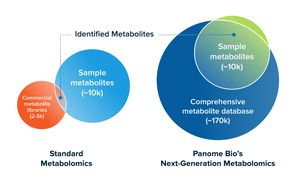The hybrid system of Ni/TiO2 and TsDPEN-Rh-Cp-Cl demonstrates enhanced efficiency through hydrogen spillover, aiding asymmetric hydrogenation of quinolines.
Researchers have made significant headway in catalysis by identifying the role of hydrogen spillover, which could break down long-established barriers between homogeneous and heterogeneous catalytic processes. A recent study published on March 16, 2025, highlights this phenomenon, particularly its applicability to the asymmetric hydrogenation of quinolines, which is integral to pharmaceuticals and fine chemicals.
Hydrogen spillover refers to the migration of hydrogen ions generated on metal catalysts' surfaces to nearby sites, allowing for synergistic activation between supported metal catalysts and homogeneous organometallic complexes. By constructing a hybrid system combining the benefits of both approaches, the researchers aimed to optimize reaction conditions, which have traditionally been limited to either one form or the other. The study notes, "the hydrogen spillover makes it possible for heterogeneous catalysts and homogeneous organometallic complexes to cooperate, breaking the boundary between homogeneous and heterogeneous catalysis."
The mode of hydrogenation typically involves using metal complexes to cleave H2, facilitating the transfer of hydride ions to organic substrates. The research demonstrates how the specially formulated hybrid system involving Ni/TiO2 significantly enhances the conversion rate of quinaldine by up to 2.1 folds. The TsDPEN-Rh-Cp-Cl catalyst remains responsible for controlling product enantioselectivity. The study emphasizes, "the mechanism investigation clearly confirms the H2 spillover from Ni/TiO2 to TsDPEN-Rh-Cp-Cl in the asymmetric hydrogenation process."
An extensive exploration of the catalysts demonstrated the interplay between the conversion and selectivity. The hybrid system achieved 68% conversion with enantiomeric excess remaining stable around 71%, displaying the added versatility when both contact points were optimized. This synergistic effect suggests not only improved efficiency but also robustness against traditional stance of selectivity being compromised for activity.
While previously, the catalyst TsDPEN-Rh-Cp-Cl alone produced lower conversion rates around 42%, the introduction of Ni/TiO2 allows higher hydrogen dissociation with lesser risk of poisoning by substrate compounds. Consequently, the addition of this support significantly boosts the overall reaction activity without drastically reducing the quality of the product. The study highlights, "the coupling of Ni/TiO2 and TsDPEN-Rh-Cp*-Cl significantly increases the conversion but with slight reduction of enantioselectivity."
This work opens avenues for future research focusing on the integration of other catalysts and optimizing conditions such as the medium's pH, which showed to influence the efficiency of the hydrogen relay mechanism distinctly. The research articulated the need for improving conditions to maximize both activity and selectivity, urging continuous exploration of hybrid systems to address longstanding catalytic issues.
Overall, this study not only elucidates the importance of hybridization between catalytic systems but also unveils the significant potential hydrogen spillover harbors to revolutionize conventional practices within asymmetric hydrogenation paradigms.



